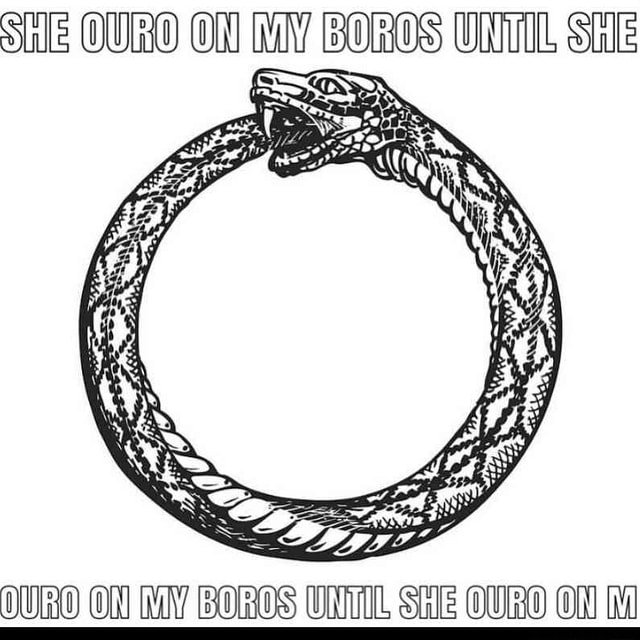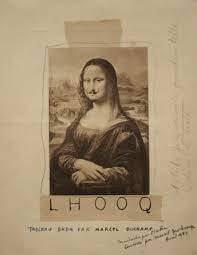The Art of Absurdity: Resurgence of Dadaism through Gen-Z memes.
Written by Sakshi Sadashiv K, a journalism student from Jamia Millia Islamia. She covers gender, culture, crime and art. She swims, collects empty glass bottles and sews old torn clothes shabbily.
During the 2 years that I was in the pandemic schooling, I found myself laughing at memes that made no sense. Meanwhile, the world around me was crumbling, my mother was sick, I was not able to meet my family abroad and was finding it hard to cope up with zoom classes. After the haze of the pandemic was somewhat withering, I still found myself laughing at absurdity.
So what really happened with all of us?
Through this article, I intended to trace the origins of these absurd memes, its resonance within the conscience of young minds, and its subsequent spillovers in our lives.
Dadaism: Meaning behind Meaningless
The origins of these memes lie in the late 1920s movement of Dadaism. Dadaism is an artistic movement from the early 20th century, predating surrealism. Dadaism's foremost intention was to challenge the social norms of society, and purposefully make art that would shock, confuse, or outrage people. It flourished on contradicting everything that was conventional in society. Originally, the word ‘dada’ was used colloquially in French for a hobby horse. The word’s literal meaning is ‘nonsense’ or irrationality. In some languages, it meant ‘yes, yes’ as a parody of the population’s senseless and oblivious obedience to authority, whilst in others, it had completely different meanings and connotations. Dadaism essentially was an avant-garde (experimental) movement that is characterized by whimsical humor, leaning towards absurdity. The Dadaist movement contradicted reason, rationality and order of the rising capitalist society, instead favoring chaos, non-sense and anti-bourgeois sentiments.
During the first World War, artists, intellectuals and writers like Tristan Tzara, Mina Loy, and Emmy Hennings, Hugo Ballwho were opposed to the war sought refuge in Switzerland. I think to a large extent, Dadaism was a movement with blunt political overtones – a reaction to the futile slaughter of the trenches of WWI. It essentially declared war against war, countering the absurdity of the establishment’s descent into chaos with its own kind of nonsense. For the Dadaists who belonged to the Lost Generation, WWI was a demonstration to the apathy of the universe. Through Dadaism, the artists poured their anger on the universe onto their canvases.
L.H.O.O.Q. is a ‘readymade’ sculpture by Marcel Duchamp. It was made from an inexpensive postcard of Leonardo da Vinci’s Mona Lisa (1503-06) which Duchamp then drew a waxed moustache and goatee onto. The piece features elements of satire, bluntly rejecting the aesthetic of ‘high art’. The title of the piece is also satirical, as L.H.O.O.Q. when said in French sounds like ‘Elle a chaud au cul’, translating to ‘she’s hot in the butt’ and connoting an underlying sexuality to the piece.
Image Source: Wikipedia
Memes: Is this Dadaism?
Image Source: Know Your MemeMy generation, Gen Z as they call us (the generation roughly identified to be born between 1997 and 2012) mirrors the anxieties shared by the Lost Generation and subsequently the Dadaists. Contrary to popular belief, memes didn’t originate on the internet. Humans have used symbols and comedic elements in text to communicate for as long as they have used a symbolic system. The origin of the word ‘meme’ is denoted to British evolutionary biologist Richard Dawkins is credited with introducing the term in his 1976 book, “The Selfish Gene.”, although it's difficult to analyze it as the first meme ever. In simpler terms, a meme is simply an idea that rips and settles into a public consciousness.
However, the origins of nonsensical memes is a newer phenomenon primarily attributed to us.
Image Source: WikipediaFor example, this meme will make us laugh, but not probably not people older to us.
The first thought of anyone would be, this isn’t funny because it doesn’t make any sense. That is exactly why it is funny (for us). The memes are supposed to be nonsensical, absurd, bordering on nihilism.
By relying on nihilism, they attempt to dismantle the premises and correlation between comedy and memes, and in the process do not primarily serve the purpose of comedy, that is humor. They are designed to be unamusing and tragic, and that is exactly what makes them funny. Essentially, what I am trying to say is this - Gen Z memes are very target audience specific (i.e us :) and therefore, their marketability of being funny is not compatible with all generations. Similarly how dadaism wasn’t digestible for all.
Probably Relevant Side-Note: Contrary to popular belief, memes didn’t originate on the internet. Humans have used symbols and comedic elements in text to communicate for as long as they have used a symbolic system. In modern history, we started seeing meme-like concepts - i.e comedic drawings in print media. Now, we refer to them as cartoons.
Baby-Cha-Cha is regarded as the first digital meme, in 1996 due to its widespread popularity on the internet. Through internet’s interlinkage across cultures and digital media’s boom, the concept of a meme slowly transfigured into a cemented idea of universality – something that is universally recognisable or “relatable”.
Absurdity: The meaninglessness of meaning
The theatre of the absurd and subsequently its Art is, however, dated to post WW2. The plays of Absurdity focus largely on existentialism and express when human suffering and existence lack meaning and purpose.
Albert Camus in Myth of Sisyphus (1942) summarizes this best by saying,
Dying voluntarily implies that you have recognised, even instinctively, the ridiculous character of that habit, the absence of any profound reason for living, the insane character of that daily agitation and the uselessness of suffering.
When I first read and saw Waiting for Godot in my undergraduate studies, I was dumbfounded. My first reaction was “What just happened?”. Our professor then explained how the structure of these plays are designed. The structure of these plays are typically a circle - with the finishing point the same as the starting point. Logical structure, construction and argument give way to irrational and illogical speech and to the ultimate conclusion - silence.
In Waiting for Godot by Samuel Beckett (1953), characters exist but they are devoid of any semblance of identity. The two, Estragon and Vladimir are old acquaintances, but they are not sure of their identity. They breathe, they wait.. and wait. They wait for the ultimate extinction, but the extinction seems far away. It's frustrating and expresses the meaninglessness of existence. The play starts with them waiting, and ends with them waiting, structuring it into a circle, and the conclusion remains as silence. The meaninglessness makes the play absurd. The ending is silence, and doesn’t denote a conclusion in the usual sense. An orthodox conclusion would make the audience satisfied with the ending, the wait leading to confrontation, of some sorts. However, theatre of the absurd tugs at this confrontation but strips the audience of any satisfaction at the end. The wait continues; the human consciousness remains unsolved; the problem of existence remains meaningless, futile and purposeless.
Probably Relevant Side-Note: In my opinion, Waiting for Godot remains a poignant piece on social commentary and the meaning(/lessness) of existence. However, there were no female characters in this 1953 play. Which will continue to happen for years to come. The copyright for the play runs out 70 years after the playwright's death, meaning women and non-binary performers legally have to wait until the end of 2059 to be able to play Vladimir and Estragon. In Gender and Abusrd: Camus, Esslin, Playwrights, and the Consequences of Feminism, Sterling Melcher draws on from Simone de Beauvoir’s work and expression on women and the absurd. At the beginning of her work, de Beauvoir questions the premises of the maledominated society with three questions, “Is there a problem? And what is it? Are there even women?” (Beauvoir 3). The final question is the most intriguing, and the beginning of the problem within the structures of absurdist thought. What is the role of women in a world created by men?
As Camus writes about the Absurd Man, he completely ostracizes women from the subjectivity he discusses. Furthermore, the only people fictional characters Camus uses to represent the Absurd Man are Don Juan and Sisyphus. Don Juan is a notorious seducer and he is conscious of his desires and the impotency (pun not intended) of its completion: “If he leaves a woman it is not absolutely because he has ceased to desire her. A beautiful woman is always desirable. But he desires another” (Camus 71). Through & for his absurdity he has filled his life with countless women, never looking for love, instead defining them as sexual objects walking on earth to please him. He has chosen to live life by doing the only thing he has as a man; the ability, and dare I say, the audacity to define women. Camus recognizes the process of the Absurd Man, but offers no room for women to connect to these stories.
Juxtaposition of Gen Z culture with Dadaism
With Dadaism artwork post WW1, Dadaists questioned the premises and infrastructures of art, breaking the walls of artistic conception itself.
Image Source: WidewallsFreytag-Loringhoven was dubbed "the only one living anywhere who dresses dada, loves dada, lives dada." Making up new words like “phalluspistol,” “spinsterlollipop,” and “kissambushed," Freytag-Loringhoven created her own flamboyant, collaged visual language to bring her graphic and raggedy poetic visions to life. It's also been speculated that Marcel Duchamp's idea for his revolutionary "Fountain" was, in fact, Freytag-Loringhoven's proposal. Duchamp wrote a letter to his sister stating that a female friend had sent him the urinal under the male pseudonym Richard Mutt.
“A self-proclaimed anarchist, she found what she wore, from shower curtain rings as bracelets to postage stamps as beauty marks.” Loringhoven was known for her “living collages”, performances that went beyond without a beginning or end, actualised by ornate costumes and absurd behavior that bridged the conceptions of art & absurd. Her willingness to be ugly and absurd is much of the charm.
Another such artist was Mina Loy.
Image Source: Mina LoyLoy changed her given name from Lowy to evade anti-Semitism. Loy considered herself a visual artist, was also a fierce feminist, writing in her early “Feminist Manifesto” that “there is nothing impure in sex -- except in the mental attitude towards it.” Loy lost her 1-year-old daughter and a 14-year-old son. Nonetheless, in old age, she strangely, in the truest Dadaist sense, declared that "everything has been funny in my life."
With the Theater of Absurdity post WW2, the writers questioned the structures of linear storytelling, arguing and juxtaposing silence with dialogues. With these memes Gen Z questions and juxtaposes the conventional conception of memes and comedy itself. It juxtaposes tragedy and comedy, oftentimes questioning the premises and structures of comedy itself. Gen Z's humor sees a reflection of similar anxieties whether it’s a relatable joke about depression or a nonsensical anti-meme. Social media sites such as Tiktok, Twitter, Reddit, and Instagram have been dominated by Gen Z and their humor parallel with that of Dadaism: absurdity, lack of a clear punchline, and a design to be purposefully misunderstood. Gen Z humor is rooted in a deep sense of sarcasm with several layers of irony. In simple words, it makes absolutely zero sense, that’s what makes it so funny. In the process of absurdity and use of visual mediums through use of Dadaist concepts, Gen Z's humor defies the conventional notion of comedy, sometimes even stripping it to juxtapose the yoking of comedy and tragedy.
Gen Z, unlike previous generations, is a generation born out of technology. Gen Z mirrors the Lost Generation primarily because both came during an age of unstable political, economic climate, turned disillusioned with society, which led to the development of a Dadaist style of art, literature and humor as means to protest against the culture they grew up in.
Gen Z grew up during wars in Afghanistan and Iraq. While they were young during the 2008 recession, they are now witnessing the student debt crisis, recession after the pandemic and climate crisis. The pandemic has significantly affected the thought processes of the Gen Z, often altering their lives in ways unprecedented.
Gen Z primarily uses the visual medium for memes. Text-heavy images and photomontages are not the norm, however all images are supported with a text to emphasize the irony. Visual media, especially images and photomontages as protest, date back to Dadaists.
Hanna Höch’s “Cut with the Kitchen Knife Dada Through the Last Weimar Beer Belly Cultural Epoch of Germany” is a forceful commentary, particularly on the gender issues erupting in postwar Weimar Germany. Image Source: WikipediaFor instance, Hanna Höch was a German photomontage master and one the few women pioneers who was a part of the Dada movement. Hanna protested against the norms of the art establishment and the conservatism of the government. However, her work stretched beyond political commentary: she explored nuanced gender identities, fantasy and self-introspection in her photomontages. Today, with the boom of Instagram, the photomontages have become all the rage and images have become fundamental to online protest, just like Hanna Höch intended.
Many believe that Gen Z have taken to activism and humor as a potent coping mechanism for themselves and whoever resonates or ‘relates’ with them. Considering that the only requirements that need to be met in order for something to be considered dadaism is that it is strange and doesn’t make sense, you could say that these memes are the same as the art produced in the 1900s.
Aspects of Dadaism and Absurdity are not just evident in their memes, but other aspects of life as well. Work-culture norms of Gen Z include Rage-Applying, moonlighting and Quiet-Quitting or Rage-Quitting, both of which have enraged the generations before them. A Deloitte survey found that 40% of Gen Z’ers would like to leave their job within two years, and 35% would leave without having another job lined up. Often labeled as the ‘Great Resignation’ Gen Z defines the Quiet Quitting simply as a rejection of hustle culture - a supercharged work ethic is the expectation to go above and beyond in your job. The well-established criticism of hustle culture has been that it is self-destructive, delusional and it leads to poor mental health and anxiety. This ‘trend’ or practice is also likely a byproduct of the psychological fallout from living through the coronavirus pandemic, and the subsequent burnout that affected millions.
Image Source: Instagram’s For You pageTiktok creator, Zaid Khan (@zkchillin) summarizes it in a tiktok.
Your worth as a person is not defined by your labor” The tiktok received nearly 500,000 likes and was viewed over 3 million times.
On the other hand, rage applying is slowly gaining momentum. This refers to the method of mass applying for a range of jobs online and is often prompted by an individual’s dissatisfaction from their current job. This practice is commonly encouraged among Gen Z because it can lead to a huge salary boost or more learning opportunities at the next place of employment but it hints at severe anxieties among Gen Z. Economic uncertainty meshed with the firehose of layoff announcements are giving rise to this wave of applying quickly to a lot of jobs.
Gen Z philosophy resonates with Albert Camus’ belief that people should embrace universal chaos in spite of it. Finding humour in the midst of a burning world is Gen Z’s coping mechanism. Bonding over universal anxieties allows Gen Z to share the burden of living where disappointments are more prevalent than ever. Regardless, just as its counterculture predecessors, Gen Z’s absurdism intends to leave an impression.
Image Source: Instagram’s For You page












